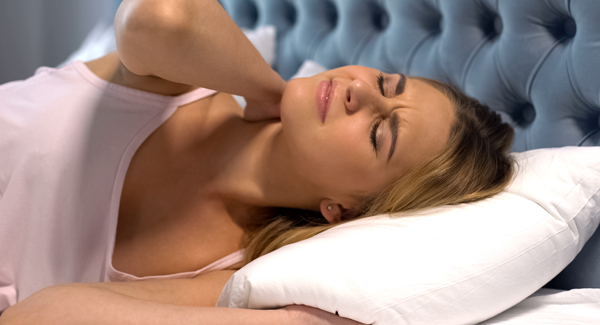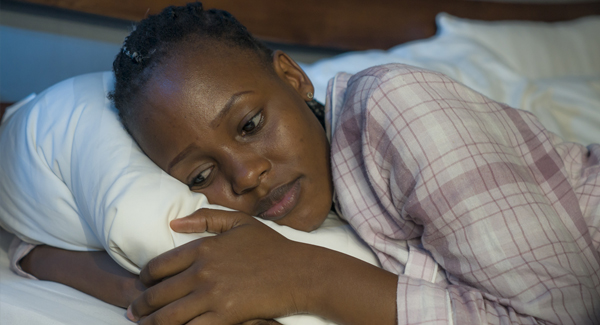Position Yourself for a Good Night’s Sleep
When joint pain makes sleep elusive, follow this joint-by-joint guide to getting comfortable and finding the right sleep position for you.
By Mary Anne Dunkin
Restful sleep is important to almost every aspect of your health — including managing your pain and your arthritis. Yet pain from arthritis can make getting to sleep and staying asleep difficult. Finding ways to ease pressure on your painful joints is key.
Experts recommend you start by taking a closer look at what you sleep on — and in. If your mattress sags or has depressions where you sleep, it’s probably time for a new one — or at least to have someone rotate the one you have, says Meryl Picard, PhD, assistant professor in the Department of Occupational Therapy at Seton Hall University in South Orange, New Jersey. Sheets and pajamas should be made of smooth material (cotton, silk or microfiber) that allow you to move freely at night. Friction that inhibits movement can lead to morning stiffness, she says.
Next, look for ways to soothe sore joints. Manisha Sheth, PhD, assistant professor of occupational therapy in Southern California at West Coast University, recommends a warm bath or shower before bed. For individual joints, apply topical analgesics or microwavable hot packs. If joints are inflamed, a freezable gel pack wrapped in a towel provides cooling relief.
In addition, try this joint-by-joint guide to sleep positions and other tips to sleep with less pain. But if you have had joint surgery, ask your surgeon about any positions or movements you should avoid.
Neck
The goal is to keep your neck in a neutral position, says Picard. If you are a back sleeper, occupational therapists (OTs) recommend using a thin pillow that will keep your spine aligned while you sleep. Side sleepers should choose a taller pillow under their neck so their neck aligns with their head. An alternative, says Sheth, is to use a U-shaped travel pillow or rolled up towel to support your neck. Avoid sleeping on your stomach if you have neck pain, says Picard. “When you are truly on your stomach your head has to be rotated to the right or the left, so for people who have predominant pain in their neck, that can be really difficult.”
Back
Align the normal curves of your back starting with a thin pillow beneath your head. For back sleepers, Picard recommends adding a pillow underneath the small of the back and another under the knees. For side sleepers, add a small pillow beneath the curve at your waist and one between your knees. Stomach sleeping isn’t recommended, but if you do it, place a thin pillow under your pelvis, or turn slightly onto your side with your lower leg bent at the hip and knee to support you, Picard says.
Shoulders
Side sleepers should lie on the side that is not painful and place a thick pillow under the arm of the painful shoulder to keep it elevated. Shift the shoulder back instead of letting it slump forward if possible. When back sleeping, place a pillow under each arm. This can also be helpful for elbow pain, says Picard.
An alternative for back sleepers, says Sheth, is to sleep with a wedge under your trunk to support your upper body at 45-degree angle. Add a roll or pillow under your knees.
Wrists and hands
For pain from carpal tunnel syndrome or from wrist or hand joint arthritis, splints may be helpful for holding hands in a position that reduces pain. Picard advises having a splint fitted by an OT. “If the fit is not right, you could end up causing more pain,” she says. If hand pain with swelling is a problem at night, ask your OT about using compression gloves.
Hips
Side sleepers should lie on the hip that isn’t painful, and place one or more pillows between the legs. When lying on your back, place a pillow or rolled up blanket beneath your knees and possibly another under the small of your back.
Knees
When sleeping on your back, place pillows beneath your knees. When sleeping on your side, place one or more pillows between your knees. Picard recommends experimenting with one, two or even three pillows to find what works for you. If you wake up in the night to find you have kicked the pillows around, simply reposition them for comfort and go back to sleep.
Feet
When gout or arthritis affects the small joints of the feet, the weight of even a bed sheet or blanket can keep you awake with pain. Picard recommends blanket lifters, which attach to the mattress over the fitted sheet but underneath the top sheet and blankets to hold them above painful feet and lower legs. For foot swelling that interferes with sleep, ask your OT about compression stockings.
While the right position can reduce pain and help you sleep, Picard generally advises against devices that confine you to one position overnight. “If you don’t move, joints can be very stiff,” she says. “We want people to be moving around.”
Published 5/7/2021; Reviewed 3/28/22
Stay in the Know. Live in the Yes.
Get involved with the arthritis community. Tell us a little about yourself and, based on your interests, you’ll receive emails packed with the latest information and resources to live your best life and connect with others.


